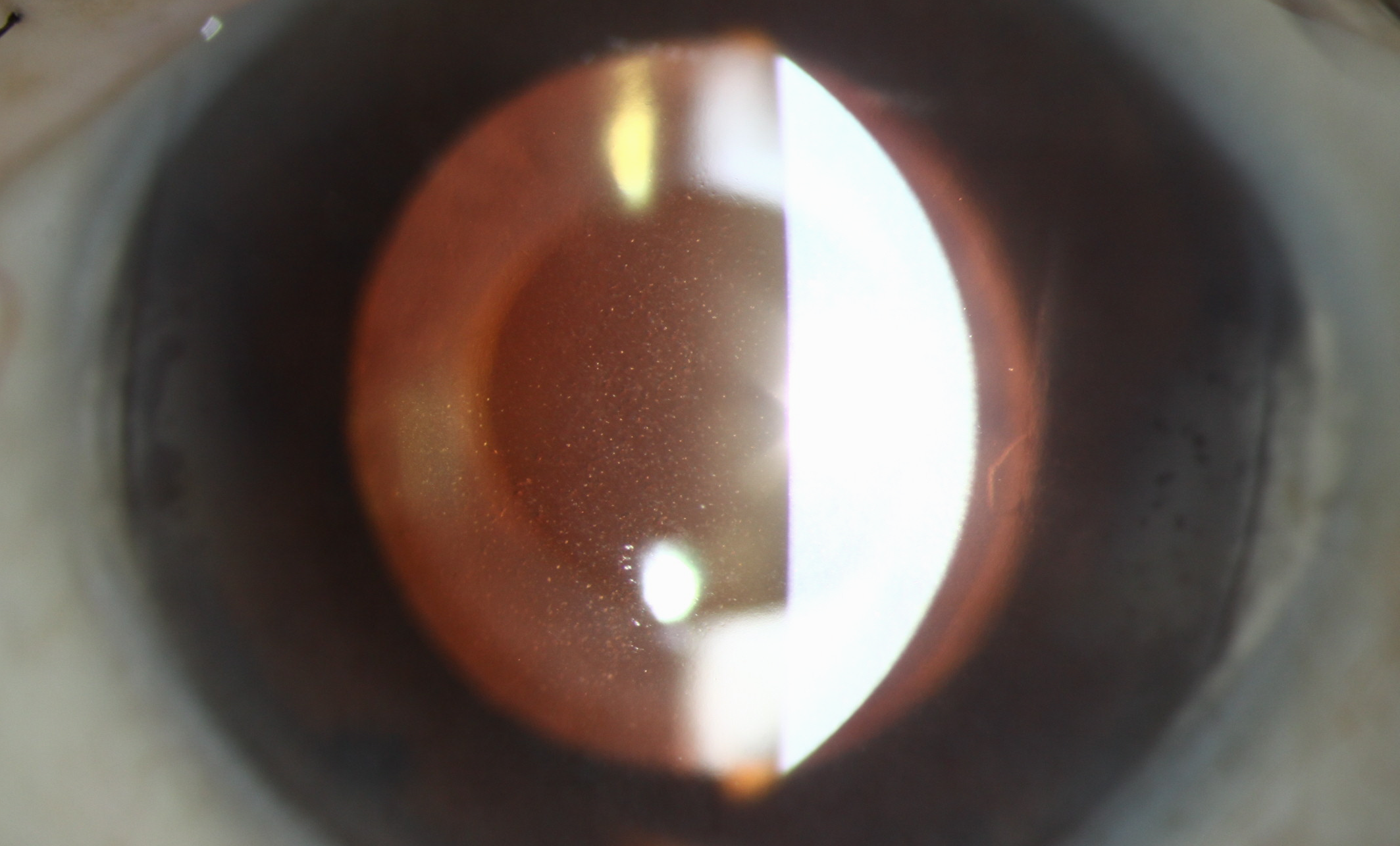 |
| Diurnal variation played a significant role in Fuchs’ changes throughout the day. Photo: Christine Sindt, OD. Click image to enlarge. |
Recently published data revealed distance and near visual acuity and refraction changes over the course of the day among patients with advanced Fuchs’ endothelial corneal dystrophy. These findings underscore the importance of considering diurnal variation when determining disease severity in optometric practice as well as clinical trials.
Given patients with this condition typically report poor vision in the morning that improves throughout the day, researchers sought to quantify the amount of variation in near and distance visual acuity and refraction among this patient population. The prospective cohort study included patients with clinically advanced Fuchs’ dystrophy whose best-corrected distance visual acuity and near visual acuity were tested alongside controls with healthy corneas.
The researchers conducted subjective refraction and autorefraction in a presumed steady state in the afternoon. They repeated measurements directly after eye opening in the hospital the next morning and every 30 minutes for up to two hours in a subgroup of patients.
The study authors found that the mean distance visual acuity among patients with Fuchs’ dystrophy was worse by 23 letters directly after eye opening in the morning when compared with late afternoon. No difference was observed in patients with healthy corneas.
The data showed that visual acuity improved over the course of the study in the dystrophy cohort. Additionally, the study authors reported that visual acuity in the morning could be improved with fine tuning of refraction. These refractive changes were exclusive to study participants with Fuchs dystrophy.
While these findings suggest that Fuchs’ patients experience deterioration in near and distance visual acuity after eye opening vs. late afternoon, the study authors noted that most individuals do not need a second set of “morning glasses” since the differences in refraction are relatively small.
“Nevertheless, diurnal variation is a specific feature of Fuchs’ dystrophy and is not typical for healthy eyes without Fuchs’ dystrophy,” they concluded in their paper. “Consequently, when evaluating patients with Fuchs’ dystrophy, time since eye opening is a key parameter to account for when evaluating disease progression in clinic or for clinical trials or when scheduling patients with Fuchs’ dystrophy for refraction.”
Brandi-Dohrn F, Jiang J, Grewing V, et al. Diurnal Variation of Visual Acuity and Refraction in Fuchs Endothelial Corneal Dystrophy. Cornea. May 9, 2023. [Epub ahead of print]. |


